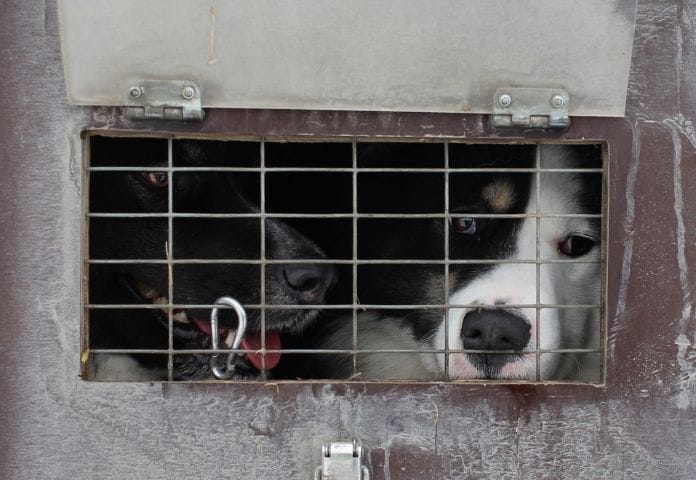It’s no secret that fake news and fake rescue videos are starting to surface on the internet.
These fake dog rescue videos can make you believe that dogs require saving when in reality, they’re not.
It’s important to be aware of these fake videos because they just want your money and will do anything for it. In this blog post, we’ll talk about how fake dog rescue videos work and what you can do if you come across one.

The Purpose of Fake Dog Rescue Videos
Dog rescue videos encourage pet lovers to be active in the rescue community and initiate shelter and rescue programs to give excellent care to animals.
However, fake animal rescue videos have started to scatter across the internet. Videos like these, which are frequently staged, show dogs in horrible situations with a piece of dramatic background music playing. In the end, a hero emerges to “rescue” them.
The heartless people who make these videos get a profit by advertising them, then exploiting viewers to share them, increasing their views.
How Cruel Are Fake Dog Rescue Videos?
A YouTuber whose channel goes by the name PaymoneyWubby recently brought attention to some faked dog rescue videos on YouTube.
He directs attention to a certain YouTube channel, which appears to feature videos of street dogs trapped in horrible situations with dramatic music playing over it.

In almost every clip, a child comes to rescue the poor animal.
These videos were staged, sometimes with full intros shot to set the scenes of how the children “randomly” came across the animal.
They also often featured what appeared to be the same dog getting stuck.
Why people get convinced by a fake dog rescue video?
As simple as it may sound, video creators, rely on the viewer’s empathy for promotion.
Pet lovers would always want to share rescue videos and promote the good that shelters and rescues do in the community.
Not only that; these fraudsters make it harder for people to determine what is real and what is fake. Sharing legitimate rescue videos would now have to be thoroughly checked.
The question now is “do we stop sharing rescue videos?”
Of course not! Viewers would need to think more critically about what they choose to share. It would be quite easy to determine a real rescue video from a staged one.
How To Tell If Dog Rescue Videos Are Fake?
Before you click Share when you come across a rescue video on social media, you must look for red flags. Otherwise, you could be involved in a pet scam by increasing the profit these scammers get from monetizing the video.

Here are some things to think about:
- Look for a legitimate non-profit organization’s name attached to the video. If there is none, it’s probably best not to share. Hope for Paws and Animal Aid Unlimited are legit organizations that share rescue videos.
- In most real-life rescues, the responders will claim to have been contacted by a concerned citizen and arrive with tools specifically designed for rescue. They don’t usually show up without leashes, nets, treats, or anything to assist them.
- Legit rescue videos show workers and their professionalism in handling the situation. They wouldn’t just stand around filming as a dog approaches a snake and gets attacked, for example.
- A legitimate rescue organization posts their video with all the information (or description) they need to share. They’ll almost always include a link to their website so you can give money.
- Real rescuers work for non-profit groups. If you go to their websites, they should say somewhere that they are a 501(c)(3) non-profit, which means they are a charitable organization and your donations are tax-deductible.
These pointers will assist you in determining if a dog rescue video is real or fake.
However, real rescue movies can have parts that appear to be staged, while fake ones can contain scenes that appear to be real.

How To Stop The Fake Dog Rescue Videos?
You can sign petitions, report videos to YouTube or any social media site they appear on. Most importantly, you should stop sharing fake dog rescue videos.
These efforts might assist to cut off the flow of money to these fraudulent video creators. When they realize that it’s no longer profitable and that sharing their videos is difficult, they may stop making them.
- Everything You Need to Know About Silver Grey Dorking Chicken Breed - June 28, 2022
- 5 Reasons Why Cats Tuck Their Paws - June 28, 2022
- 60+ Names Meaning ‘Panda’: The Best Names for Your Baby Panda - June 28, 2022

